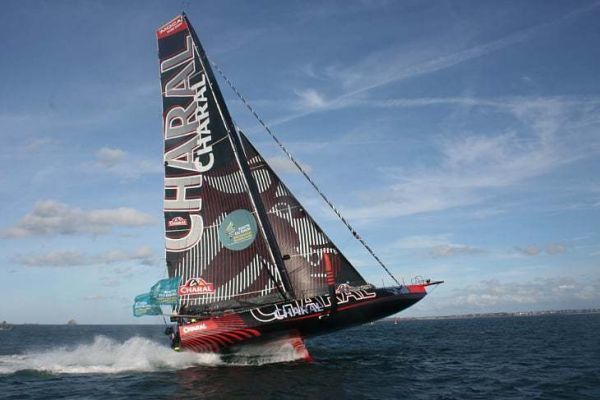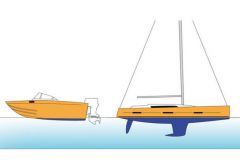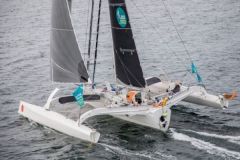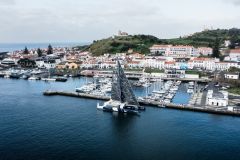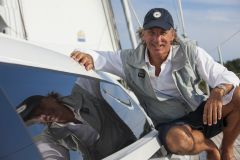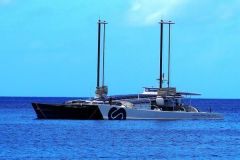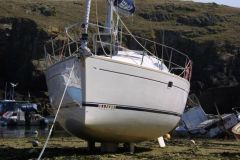Gathered at the initiative of Bretagne Developpement Innovation, a panel of experts in ocean racing, including Xavier Guilbaud a naval architect from VPLP Design, Antoine Mermod of the IMOCA class, Olivier Douillard from the data analysis company AIM45, Eric Levet of the Marc Lombard firm and the naval architect Renaud Banuls in the course of the Paris Boat Show, the team exchanged views on the technical aspects of the Route du Rhum 2022.
A thrilling Route du Rhum
Active in the different classes, the speakers were all pleased with the sporting interest of the race. In Ultim, Renaud Banuls underlines: " The game was exciting with boats that stay within a nice distance to watch race, that are on the scale of a reef or a gybe. The level is getting tighter." Xavier Guilbaud agrees: "We had a real in-flight regatta for 50 to 60 percent of the time, with a commitment from the skippers that we never imagined."
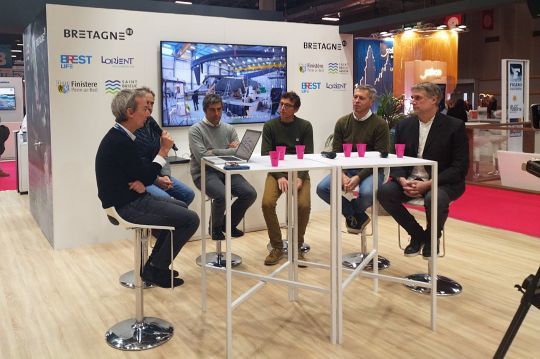
In Ocean Fifty, the architect from VPLP Design underlines the demonstrated interest of new designs, integrating the protection of sailors. "The level of commitment to be held on these boats meant that the more protected trimarans allowed the skippers to hold better averages."
On the IMOCA side, the latter emphasizes the seniority bonus. "The Route du Rhum is a race of experience. It is a sprint. It makes sense that knowing the settings of their boats well, APIVIA and LinkedOut are ahead."
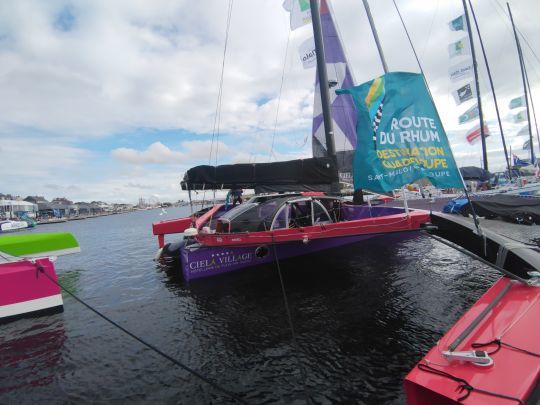
The nice regatta in Class40, with Yoann Richomme's extraordinary comeback, also validates the new monohulls that came out of the yards, as the specialist Eric Levet reminds us. "The latest hull developments are ahead."
Increasing efforts on the boats
When reviewing the breakages that have occurred in the different classes of boats, the speakers agree that there has been a major evolution in the level of stress to which the boats are subjected. Unlike in 2018, the Ultimates did not experience any major breakages in the 2022 Route du Rhum. The breakage of the daggerboard on Banque Populaire 11 is still being analyzed, but other damage to the appendages was noted on the return voyages.

On the IMOCA side, Antoine Mermod is pleased with the decrease in the breakage rate in an ever increasing class. "Of the 38 boats at the start, the abandonment rate is only 11 to 12%, divided by 2 compared to 2018. There were 7 new boats at the start and 7 at the finish." Regarding the dismastings of Bureau Vallée and Apicil, he adds, "Apicil had a collision that damaged the outrigger, leading to the dismasting. For Bureau Vallée, it is under analysis. The mast was checked again in August. Today, the mast is the fuse and it is difficult to find another one. By limiting the foil surface, we limit the torque, which allows us to play on the safety coefficient. But our boats last 20 years and evolve, so we try to take that into account in the rules. We're not like cars where every year they build new ones."

Concerning the dismastings in Class40, Eric Levet indicates that the reason for the dismastings is probably a slightly undersized spreader bar. "The rigging may be a little light considering the high dynamic efforts."
Know how to use the data
Modern ocean racing is increasingly instrumenting its boats. But if the sensors are useful, especially to explain damage after the fact, they have other functions and could be used even better. Olivier Douillard explains: "Initially, data was used primarily for performance and speed. Today, that's only 20 percent. The rest is used for security, energy... But we don't use it enough. Our idea is to make the teams autonomous in their analysis. We have seen that the teams were doing about 15 analyses on the platform per week during the season and 120 per week 2 months before the Route du Rhum. This is not yet routine. Accessibility is important. Today, the average IMOCA team comes to the data. We have to invest in people and processes. Until now, we've been focusing on concrete and physical aspects."
If the collection remains low in Class40, with some boats equipping their props with voltage sensors, it is massive in Ultim and IMOCA. "There are 600 to 800 sensors with frequencies from 1/2 to 50 Hz."
Knowing the boats beforehand is essential. For that, you have to sail", says Renaud Banuls: "An Ultim is 180,000 points of adjustment and by sailing a lot, we test 6 to 7,000 of them. That's why we need simulation."
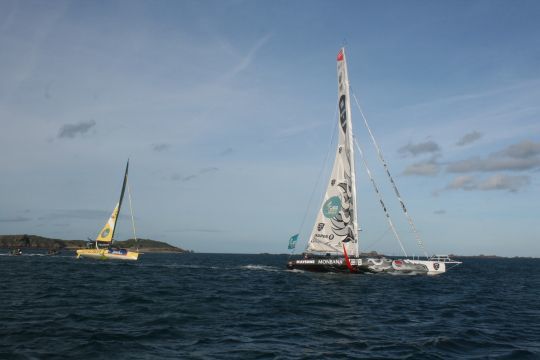
To better simulate and design, and navigate safely, Olivier Douillard advocates information sharing. "The data from the inertial units on the dynamic aspects are very dimensional. They should be shared. By knowing your environment better, you can better manage alarms, which become less theoretical and less scary, because you know you're not in the unknown."
While waiting for the data to be shared, the sharing of these feedbacks remains exciting!
